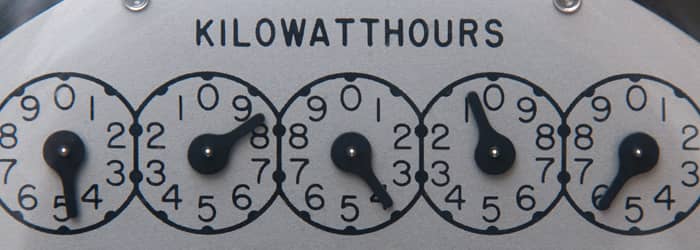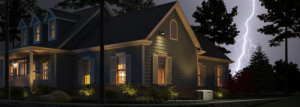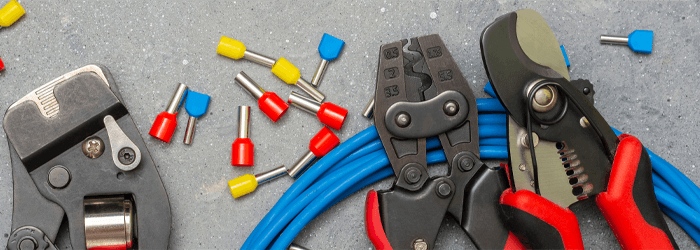Cut Your Electric Bill | 7 Steps to Big Savings
We have been touting the benefits of supercooling for years. Hundreds, if not thousands of Arizona’s residents have learned from “Rosie on the House” how to supercool their homes during the summer to reduce the cost of their electric bills.
In addition to supercooling, there are seven concepts regarding your monthly utility bill that might help reduce their cost all year round, whether you’re supercooling your house or not. It will be helpful to have your last electric bill handy for reference, while reading this blog.
Most of you will be looking at a bill from Arizona Public Service (APS) that serves about 75 percent of the electric customers in Arizona. Electric customers also buy power from Salt River Project (SRP), Tucson Electric Power (TEP), and several smaller companies
Now, let’s get down to saving some energy and money!
1 | Forget about the fees and taxes.
There are nearly 20 separate fees or taxes listed on your electric bill. They’re a distraction that you should ignore. The fees and taxes are all part of what you pay for your electricity, and they always have been. There’s no sense getting mad about those charges because there isn’t anything you can do about them. There are other actions you can take instead.
Find out what those charges mean by scrolling down past step seven.
2 | Find out your cost per kWh.
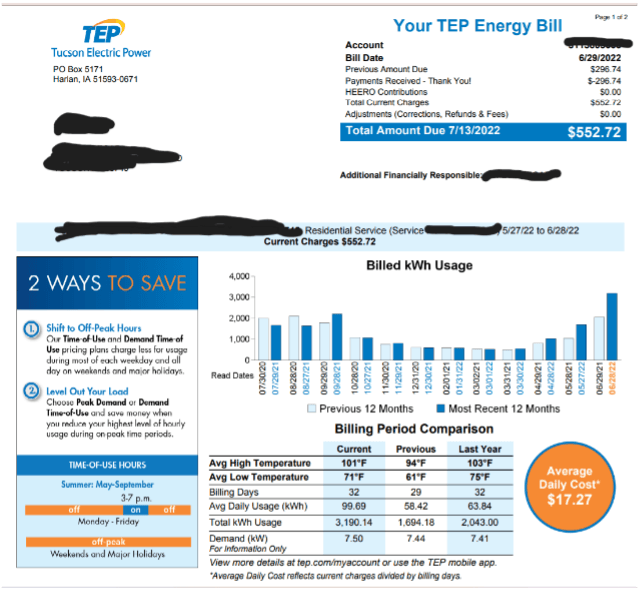 Take the “total charges for electricity services” listed on the bill and divide by the total kilowatt hours that your home used. The calculation will give you what you pay on average per kilowatt hour for electricity. If you’re paying 12 to 14 cents a kWh, you’re doing an average job and doing fairly well at controlling your bill. If you’re running 10 cents per kWh or less, you’re doing a great job. But if you have a cost of 15 to 16 cents per kWh – you. Could be doing better!
Take the “total charges for electricity services” listed on the bill and divide by the total kilowatt hours that your home used. The calculation will give you what you pay on average per kilowatt hour for electricity. If you’re paying 12 to 14 cents a kWh, you’re doing an average job and doing fairly well at controlling your bill. If you’re running 10 cents per kWh or less, you’re doing a great job. But if you have a cost of 15 to 16 cents per kWh – you. Could be doing better!
Look at the cost per kWh on this TEP bill from a listener – she paid 17 cents per kWh, resulting in a $552 electric bill! She almost doubled her kWh usage in one month. Turns out the coils in her air conditioning system were not working properly, thus, making the system work harder and use more energy.
3 | Get rid of your standard rate plan.
If you have a costly bill, you’re probably on the utility’s standard rate plan which means you pay a high kWh price every hour of the day. Many customers accidentally get on these plans when they first call up the utility to start service. These plans charge the same average rate every hour of the day and they work best fora single person living in a home or apartment with 1,000 square feet of space or less.
The TEP customer who paid 17 cents that month, had been on a basic plan, and had been paying 17 cents all along. She just changed to the demand time-of-use plan. We are interested to see her electric bills after the new rate takes effect and her air conditioning is fixed.
4 | Get on a time-of-use plan.
A high cost of kWh number often means you’re probably not on a cost-saving, time-of-use rate plan. Call your utility and ask to get on one as soon as possible. You should also be able to do it online by logging into your account. Among the better plans for on-peak hours are:
- SRP — Between November and April, higher cost on-peak hours are weekdays from 5:00 a.m. to 9:00 a.m. and 5: a.m. to 9:00 p.m.
- APS – 3:00 p.m. to 8:00 p.m. and will be changing to 4:00 p.m. to 7:00 p.m. later this year
- TEP– 3:00 p.m. to 7:00 p.m.
Sometimes the timeframes changes, so check your plan monthly.
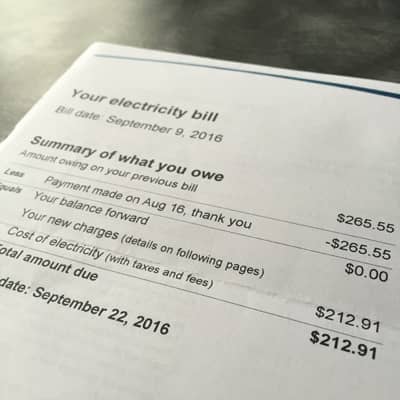
The aim is to use electricity more during hours when rates are low. Keep the air conditioning on more during the weekends. Do laundry and baking in the mornings or after 7:00 p.m. (or 8:00 p.m.) when rates are less.
“I haven’t heard from a customer yet whose bills didn’t go down once they switched to a time-of-use plan,” says Steve Koepp of Advanced Home Systems, Inc. in Phoenix, a company that helps homeowners control utility costs. Rosie adds that he only knows of one homeowner whose bill did not come down with a time of use plan. A little investigating revealed that there was a Tesla that was being hooked up for a quick charge during on peak hours- his bill was painful!
5 | Keep up the research.
After you change plans, your bill will show how many kWh you have used on- and off-peak. On-peak should only be 20 to 25 percent of your bill. You are really doing well if it’s 12 to 15 percent for on-peak. With all utilities, you should keep dividing total charges by total kWh’s. Rosie and Jennifer met a woman this week who has managed to her her on peak usage down to 2%, Her bill year over year for the month of June was cut by 50%. As she learned how to live using electricity during off peak hours, she went from an initial $12.00 a day to $6.00 a day. We all have places we would rather spend our money than at the utility company!
6 | Get off budgeting equalizer plans.
These plans charge you the same amount every month for power rather than sending bigger bills during the hot season and smaller bills in cooler months. This process takes some of the pain out of bills in summer when your AC drives up your costs. But they can be a poor solution because you tend to waste energy if you think your bill will never change. In addition, if your power use increases one year, the next year that average monthly bill will be bigger than last year.
Another problem: If a defective appliance starts using power excessively, like a pool pump, for example, you might not notice the problem for months when you’re on an equalizer plan.
An equalizer plan also makes it harder to track what you’re spending per kWh.
7 | Perform a Home Energy Audit
What good is your time-of-use plan if cold air seeps out the gaps in your doors and windows?
A home energy audit specialist will test your home and air conditioning system for leaks and other inefficiencies. The auditor may bring a thermal imaging camera to help detect unusual heating patterns—a symptom of poor insulation. A blower door test will determine how airtight your home is.
Other Charges On The Electric Bill
Here are some of the most puzzling charges and what they pay for:
Renewable Energy Standards Tariff | Mandatory, non-bypassable surcharge applied to all energy consumed by all Customers throughout Company’s entire electric service area.
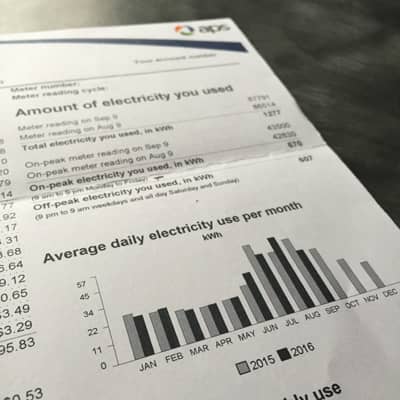 Environmental Benefits Surcharge | Pays for programs approved by the Arizona Corporation Commission, including energy efficiency and renewable energy projects.
Environmental Benefits Surcharge | Pays for programs approved by the Arizona Corporation Commission, including energy efficiency and renewable energy projects.
Federal Environmental Improvement Surcharge | Pays for environmental improvements at the APS facilities that were federally mandated.
System Benefits Charge | Pays for assistance for low-income users, customer education, environmental programs, long-term public benefit research, nuclear fuel disposal and nuclear power plant decommissioning, and other programs.
Franchise Fee | Fee charged by a city or county for the utility using public rights-of-way.
Power Supply Adjustment | Passes on rapid changes in fuel and other power costs to the consumer.
Regional Transportation Authority Tax | Funds transportation projects such as roadway expansions and safety upgrades.
ACC Regulatory Assessment | Helps fund the Arizona Corporation Commission and Residential Utility Consumer’s Office.
Federal Transmission and Ancillary Services | Pays for moving high voltage electricity from generating facilities to the utility such as APS, SRP, and TEP.
Federal Transmission Cost Adjustment | This charge adjusts for annual changes in transmission costs to serve customers. It’s based on your use of kWhs.
Four Corners Adjustment | APS has bought Four Corners Units 4 and 5, part of a power plant near Farmington, N.M., that previously belonged to Southern California Edison. This fee helps pay for that.
LFCR or Lost Fixed Cost Recover adjuster | This fee is the result of a 2012 settlement of a rate case that was approved by the Arizona Corporation Commission. It helps fund the operation of the electric grid while allowing customers to use that grid as needed.
Tax Expense Adjuster Mechanism | An adjuster that provides a reduction to customer bills based on recent changes to the federal corporate income tax rate. (A reduction! We like this one!)
A simple plan changes and adjustment to your power usage can result in significant savings. These are great action items that don’t cost you a thing!
An investment in a programmable thermostat will pay for itself in just a couple of months!
Send us your before and after energy bills so we can see your savings! Email them to info@rosieonthehouse.com.
###
PODCAST
During power outages, there’s a misconception that solar panel continue to work. They’re actually designed to shut down for good reason. However Randy Cole of Fox Valley Electric And Solar explains ways you can continue to have power when you lose it. Plus ways you can save big bucks on your electric bill. And more!
PHOTO CREDIT:
- Rosie on the House
RELATED CONTENT:
- Blog: What is a mini-split AC system — and what are the benefits?
- DIY FAQ: How to super-cool your home – and save a ton of money!
- DIY FAQ: Consumer Guide: How to Buy and AC System
- DIY FAQ: What you need to know about home insurance.
- Find trusted Arizona contractor and home improvement service providers

